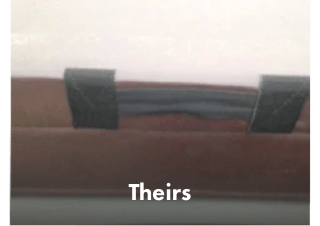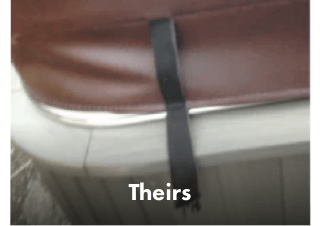Should You Leave Your Hot Tub Cover On All the Time?
Hot tub owners know that the cover is more than just a lid—it’s a critical component for maintaining water quality, energy efficiency, and safety. But a common question arises: Should the cover stay on the hot tub all the time? The answer isn’t a simple yes or no. While leaving the cover on when the tub isn’t in use is generally wise, there are important exceptions and best practices to follow. Let’s dive into the details to help you protect your investment, save money, and enjoy a cleaner, safer soak.
Why a Hot Tub Cover Matters
A hot tub cover serves three primary purposes:
-
Energy Conservation: Heat escapes rapidly from water surfaces. A well-insulated cover traps warmth, reducing the workload on your heater and cutting energy costs by up to 50%.
-
Debris Protection: Leaves, pollen, insects, and even curious critters can’t invade your water when the cover is secured.
-
Safety: A locked cover is a critical safeguard against accidental drownings, especially for households with children or pets.
But like any tool, a cover must be used correctly to avoid unintended consequences, such as trapped moisture or chemical imbalances.
When to Keep the Cover On
1. When the Tub Is Not in Use
This is the golden rule. A closed cover prevents heat loss, debris buildup, and evaporation. In colder climates, an uncovered hot tub can lose several degrees of heat overnight, forcing the heater to work overtime.
2. During Extreme Weather
Rain, snow, windblown debris, and harsh UV rays can damage your hot tub’s shell and components. A sturdy cover acts as a shield. For extra protection in sunny climates, invest in a UV-resistant cover or use a protective spray.
3. To Lock in Chemicals
Chlorine and other sanitizers evaporate quickly when exposed to air. Keeping the cover on stabilizes chemical levels, reducing the frequency of adjustments.
4. For Safety Compliance
Many regions require hot tubs to have locked covers as part of pool safety laws. Always check local regulations.
When to Remove the Cover
1. During Use
This might seem obvious, but it’s worth emphasizing: never use the hot tub with the cover on. Trapped heat and chemicals can create a stifling environment, and steam can damage the cover’s underside over time.
2. After Adding Chemicals
After shocking the water or balancing pH levels, leave the cover off for 15–30 minutes. This allows harmful fumes (like chloramine gases) to dissipate, preventing corrosion to the cover’s vinyl or foam core.
3. For Ventilation
Even when not in use, moisture can accumulate under the cover, creating a breeding ground for mold, mildew, or unpleasant odors. Once a week, remove the cover for 1–2 hours to let the tub “breathe.” Pro tip: Do this on a sunny, breezy day to speed up drying.
4. During Cleaning or Maintenance
Remove the cover entirely when scrubbing the tub, changing filters, or performing repairs. This prevents water or cleaning agents from splashing onto the cover and causing damage.
Best Practices to Extend Your Cover’s Lifespan
A quality hot tub cover can last 5–7 years, but neglect can shorten its life to just 2–3 years. Follow these tips to maximize durability:
1. Invest in a Cover Lifter
A hydraulic or folding lifter makes removing the cover effortless, reducing the temptation to leave it off. It also minimizes wear and tear from dragging or folding.
2. Clean and Condition Regularly
-
Weekly: Wipe down the cover with a mild soap and water solution to remove dirt and pollen.
-
Monthly: Apply a UV-protectant vinyl conditioner to prevent cracking and fading.
-
Seasonally: Check for mold on the underside and clean with a 10:1 water-to-vinegar mix.
3. Prevent Waterlogging
A waterlogged cover loses insulation power and becomes heavy, straining the hinges. If you notice sagging or pooling water:
-
Use a waterproof sealant on seams.
-
Tilt the cover slightly to encourage runoff.
-
Replace it if the foam core absorbs moisture.
4. Avoid “Half-On” Coverage
Partially closing the cover (e.g., during a party) traps humidity and strains the material. Remove it fully when accessing the tub.
5. Shield It from the Elements
In winter, brush off snow to prevent excess weight. In summer, use a reflective cover or shade sail to block UV rays.
Signs It’s Time to Replace Your Cover
Even with great care, covers eventually wear out. Watch for these red flags:
-
Cracking or fading on the vinyl surface.
-
Musty smells that persist after cleaning.
-
Difficulty closing or locking due to warping.
-
Increased energy bills, signaling poor insulation.
The Bottom Line
Leaving your hot tub cover on when the tub isn’t in use is a smart habit—it saves energy, protects water quality, and enhances safety. However, strategic removal is equally important. Think of the cover as a dynamic tool: use it diligently, but give your hot tub (and the cover itself) regular opportunities to air out and breathe.
By combining consistent coverage with proactive maintenance, you’ll enjoy a cleaner, more efficient hot tub and a cover that lasts for years. After all, a little effort today means more relaxing soaks tomorrow!
Our Quality
It is easy for a website to claim they have the best quality but at MySpaCover we guarantee it. We utilize only the highest quality materials and the most sophisticated processes to offer the best covers available online. Here is how our covers compare to the competition:
MYSPACOVER

Our heavy-duty handles come standard and are double stitched using marine grade vinyl to ensure the highest durability and most attractive aesthetics.

Our standard straps are double stitched and are also produced with marine-grade vinyl.

We double stitch every seam and hinge to ensure your spa cover can be used for years to come.
Other Guys

Their cheap handles are more prone to wear and tear and are known to rip off within the first two years plus the appearance speaks for itself.

Our competition uses low-quality straps that are prone to breakage and often times do not match the color of the spa cover.

Their use of single stitching and exposed shells can ultimately cause cracking and heat loss, costing you more on your electric bill.
The Underside
The underside of a spa cover is often overlooked. However, this is the material that is in constant contact with high temperatures and the chemicals in your spa. The life of your spa cover depends on a high-quality spa underside. We don’t cut corners like the other guys so you can trust that our 6 mil plastic wrap is vapor sealed to the core and will keep the heat out.
MySpaCover utilizes an 11oz PVC coated poly that, after years of rigorous testing, has proven to be the best possible material to withstand constant high temperates and chemical exposure.
Beware of mesh bottoms used by competitors as this type of material is meant to cut costs and is prone to failure.